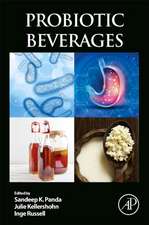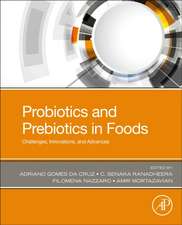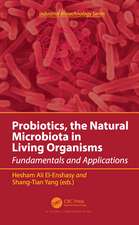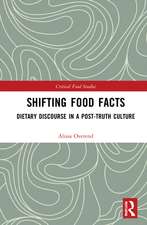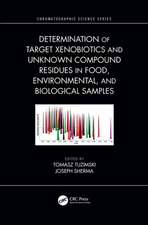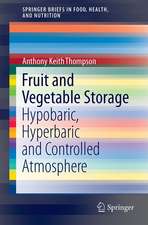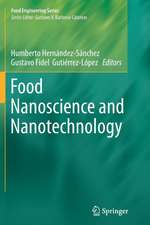Introduction to Food Process Engineering: Food Science Text Series
Autor P. G. Smithen Limba Engleză Paperback – 23 aug 2016
| Toate formatele și edițiile | Preț | Express |
|---|---|---|
| Paperback (1) | 658.05 lei 6-8 săpt. | |
| Springer Us – 23 aug 2016 | 658.05 lei 6-8 săpt. | |
| Hardback (1) | 665.42 lei 6-8 săpt. | |
| Springer Us – 21 feb 2011 | 665.42 lei 6-8 săpt. |
Din seria Food Science Text Series
- 17%
 Preț: 502.95 lei
Preț: 502.95 lei - 17%
 Preț: 469.18 lei
Preț: 469.18 lei - 15%
 Preț: 549.39 lei
Preț: 549.39 lei - 20%
 Preț: 579.80 lei
Preț: 579.80 lei -
 Preț: 458.78 lei
Preț: 458.78 lei - 15%
 Preț: 566.10 lei
Preț: 566.10 lei - 13%
 Preț: 358.75 lei
Preț: 358.75 lei - 15%
 Preț: 635.75 lei
Preț: 635.75 lei -
 Preț: 396.40 lei
Preț: 396.40 lei -
 Preț: 482.23 lei
Preț: 482.23 lei -
 Preț: 392.37 lei
Preț: 392.37 lei -
 Preț: 398.35 lei
Preț: 398.35 lei - 15%
 Preț: 508.60 lei
Preț: 508.60 lei - 15%
 Preț: 508.75 lei
Preț: 508.75 lei - 15%
 Preț: 587.39 lei
Preț: 587.39 lei - 18%
 Preț: 965.83 lei
Preț: 965.83 lei -
 Preț: 393.13 lei
Preț: 393.13 lei - 15%
 Preț: 532.70 lei
Preț: 532.70 lei - 15%
 Preț: 593.26 lei
Preț: 593.26 lei -
 Preț: 474.31 lei
Preț: 474.31 lei - 15%
 Preț: 600.74 lei
Preț: 600.74 lei - 18%
 Preț: 971.22 lei
Preț: 971.22 lei - 15%
 Preț: 477.74 lei
Preț: 477.74 lei - 18%
 Preț: 1010.33 lei
Preț: 1010.33 lei - 15%
 Preț: 477.74 lei
Preț: 477.74 lei - 15%
 Preț: 574.25 lei
Preț: 574.25 lei
Preț: 658.05 lei
Preț vechi: 774.18 lei
-15% Nou
Puncte Express: 987
Preț estimativ în valută:
125.91€ • 131.82$ • 104.19£
125.91€ • 131.82$ • 104.19£
Carte tipărită la comandă
Livrare economică 05-19 aprilie
Preluare comenzi: 021 569.72.76
Specificații
ISBN-13: 9781489978820
ISBN-10: 1489978828
Pagini: 510
Ilustrații: XVII, 510 p.
Dimensiuni: 178 x 254 mm
Greutate: 0.91 kg
Ediția:Softcover reprint of the original 2nd ed. 2011
Editura: Springer Us
Colecția Springer
Seria Food Science Text Series
Locul publicării:New York, NY, United States
ISBN-10: 1489978828
Pagini: 510
Ilustrații: XVII, 510 p.
Dimensiuni: 178 x 254 mm
Greutate: 0.91 kg
Ediția:Softcover reprint of the original 2nd ed. 2011
Editura: Springer Us
Colecția Springer
Seria Food Science Text Series
Locul publicării:New York, NY, United States
Cuprins
Preface.- 1. An introduction to food process technology.- 2. Dimensions, quantities and units.- 3. Thermodynamics and equilibrium.- 4. Material and energy balances.- 5. The fundamentals of rate processes.- 6. The flow of food fluids.- 7. Heat processing of foods.- 8. Mass Transfer.- 9. Psychrometry.- 10. Thermal processing of foods.- 11. Low temperature preservation.- 12. Evaporation and drying.- 13. Solids processing and particle manufacture.- 14. Mixing and separation.- 15. Mass transfer operations.- 16. Minimal processing technology.- Appendix A: List of unit prefixes; Greek alphabet.- Appendix B: Fundamental and derived SI units; Conversion factors.- Appendix C: Derivation of a dimensionless correlation for film heat transfer coefficients.- Appendix D: Properties of saturated water and water vapour.- Appendix E: Derivation of logarithmic mean temperature difference.- Appendix F: Derivation of Fourier's first law of conduction.- Answers to problems.- Index.
Textul de pe ultima copertă
Introduction to Food Process Engineering treats the principles of processing in a scientifically rigorous yet concise manner, and can be used as a lead in to more specialized texts for higher study. It is equally relevant to those in the food industry who desire a greater understanding of the principles of the food processes with which they work. Written from a quantitative and mathematical perspective, this textbook is not simply a descriptive treatment of food processing. The aim is to give readers the confidence to use mathematical and quantitative analyses of food processes. To further this goal, each chapter includes a large number of worked examples and problems, with solutions provided in the back of the book. The mathematics necessary to read this book is limited to elementary differential and integral calculus and the simplest kind of differential equation. This second edition includes two additional chapters, Mass Transfer Operations and Minimal Processing Technology, as well as numerous new and revised figures.
Caracteristici
Treats the principles of processing in a scientifically rigorous yet concise manner Gives readers the confidence to use mathematical and quantitative analyses of food processes Provides many worked examples and problems with solutions Includes supplementary material: sn.pub/extras


